 2001 Mitsubishi Airtrek Dimensions, Size & Specs
2001 Mitsubishi Airtrek Dimensions, Size & SpecsMeasurements of the 2001 Mitsubishi Airtrek, engineered for optimal performance and comfort
| Dimensions | |
|---|---|
| Length: | 4410 mm173.6 in14.5 ft |
| Width: | 1750 mm68.9 in5.7 ft |
| Height: | 1550 mm61.0 in5.1 ft |
| Trunk Capacity: | 402 liter14.2 cu ft |
| Trunk Capacity (Max): | 1049 liter37.0 cu ft |
| Weight Specifications | |
| Curb Weight: | 1330-1450 kg2932-3197 lbs |
| Maximal permitted Weight: | 1605-1725 kg3538-3803 lbs |
| Tire Specifications | |
| Tire Size: |
|
The Mitsubishi Airtrek, produced from 2001 to 2006, is a compact SUV designed to balance urban utility and practical family use. Measuring 4410 mm (173.6 inches) in length, 1750 mm (68.9 inches) in width, and 1550 mm (61.0 inches) in height, the Airtrek presents a well-proportioned vehicle footprint ideal for city driving and light off-road activities. Weighing between 1330 kg (2932 lbs) and 1450 kg (3197 lbs) in curb weight, it is lightweight for its class, contributing to nimble performance and fuel efficiency. The maximum weight ranges from 1605 kg (3538 lbs) to 1725 kg (3802 lbs), accommodating passengers and cargo comfortably without compromising stability. Storage versatility is a strong suit for the Airtrek, offering a luggage capacity of 402 liters (14.2 cubic feet) under the rear deck, which expands significantly to 1049 liters (37.0 cubic feet) when rear seats are folded down, making it practical for larger loads or weekend getaways. Tires sized at 215/60 R16 provide a good balance between road grip and comfort, supporting safe handling in various driving conditions. Overall, the Mitsubishi Airtrek's dimensions and features characterize it as a functional and compact SUV option from the early 2000s, appealing to drivers seeking a vehicle with manageable size, adequate interior space, and versatile cargo solutions.
Discover the standout features that make the 2001 Mitsubishi Airtrek a leader in its class
Have a question? Please check our knowledgebase first.
The Mitsubishi Airtrek, produced from 2001 to 2006, is an SUV with compact but practical dimensions. It measures 4410 mm (173.6 inches) in length, making it long enough to comfortably accommodate passengers while still manageable for city driving. The width is 1750 mm (68.9 inches), which provides enough stability and interior space without making parking difficult. The height stands at 1550 mm (61.0 inches), giving the vehicle a somewhat elevated stance typical for SUVs, improving visibility for the driver and the ease of ingress and egress for occupants. These dimensions contribute to a balanced presence on the road, suitable for both urban environments and light off-road use.
The curb weight of the Mitsubishi Airtrek ranges between 1330 kg and 1450 kg (2932 to 3197 lbs), depending on the specific trim and options. Its maximum weight, which includes passengers and cargo, can go up to 1605 to 1725 kg (3539 to 3804 lbs). This moderate weight range ensures relatively nimble handling for an SUV of its size, contributing to a smooth and responsive driving experience. The weight also impacts fuel efficiency—in general, a lighter curb weight benefits better fuel economy, and the Airtrek's weight is optimized to balance capability with economy. Drivers can expect reasonable fuel consumption for a compact SUV of its era, combined with a stable ride and secure road handling.
Yes, the Mitsubishi Airtrek fits comfortably into a standard home garage. Given its length of 4410 mm (173.6 inches), width of 1750 mm (68.9 inches), and height of 1550 mm (61.0 inches), it is compact enough to fit inside most single-car garages, which typically accommodate vehicles up to around 6 meters (about 236 inches) in length and 2.5 meters (about 98 inches) in width. Its moderate height also means it clears typical garage door openings without difficulty. Therefore, Mitsubishi Airtrek owners generally do not face issues parking the vehicle indoors at home.
The Mitsubishi Airtrek offers a versatile luggage space to meet practical needs. With the rear seats in their standard upright position, the luggage capacity is 402 liters (about 14.2 cubic feet), which is sufficient for everyday shopping or light travel. When the rear seats are folded down to maximize cargo space, the capacity expands significantly to 1049 liters (approximately 37.0 cubic feet). This large increase allows the Airtrek to accommodate bulkier items such as sports equipment, larger boxes, or more extensive luggage on family trips. This flexibility is a strong feature for users looking for a compact SUV with convenient cargo options.
The Mitsubishi Airtrek comes with tires sized 215/60 R16. This specification means the tires have a width of 215 mm, an aspect ratio of 60 (the sidewall height is 60% of the width), and fit on 16-inch diameter wheels. This tire size strikes a good balance between comfort, grip, and everyday usability for an SUV of this size. The relatively tall sidewall (aspect ratio 60) allows for a comfortable ride by absorbing road imperfections and contributes to better traction on mixed road conditions, including light off-road or uneven surfaces. Additionally, the 16-inch wheels provide a good compromise between ride comfort and handling precision.
The Mitsubishi Airtrek does not have a direct predecessor under the same name as it was launched as a model targeted primarily at the Asian market, particularly in Japan and China, during 2001-2006. However, compared with similar compact SUVs of the early 2000s like the Honda CR-V or Toyota RAV4, the Airtrek is quite competitive in size. At 4410 mm (173.6 inches) long and 1750 mm (68.9 inches) wide, it falls within a common range for compact SUVs, slightly larger than some but smaller than midsize SUVs. Compared to those contemporaries, it offers a practical balance of interior space and maneuverability. Its luggage capacity also holds favorably, especially when rear seats are folded, showcasing Mitsubishi's focus on versatile cabin utility.
The Mitsubishi Airtrek is designed to serve as a practical family SUV, offering ample space and comfort for everyday use. While exact interior dimensions are not specified here, the exterior dimensions, such as a width of 1750 mm (68.9 inches) and height of 1550 mm (61.0 inches), suggest a reasonably roomy cabin. The rear seating area comfortably accommodates 3 passengers, with enough headroom and legroom for children and adults on shorter to medium trips. The flexibility of cargo space thanks to foldable rear seats adds to its family-friendly nature, enabling the transport of bulky items such as strollers, groceries, or sports gear. Overall, the Airtrek balances compact external size with sufficient interior comfort suitable for small families.
During its production years from 2001 to 2006, the Mitsubishi Airtrek was equipped with a variety of engine options primarily focusing on efficiency and adequate power for urban and light off-road driving. Engine types ranged from 2.0-liter inline-4 gasoline engines to turbocharged variants in some markets, offering power outputs sufficient for daily commuting and family use. Notable features typically included all-wheel drive (in many versions), enhancing traction and safety on different terrains. Interior comfort features, safety equipment, and technological options were aligned with early 2000s standards, providing a practical driving experience rather than luxury. The vehicle's practical dimensions and flexible cargo space framed it as a strong contender in the compact SUV segment of its time.
The Mitsubishi Airtrek underwent a nameplate revival with models like the Mitsubishi Outlander Sport, which was marketed as the Airtrek in some markets after 2015. Compared to the original 2001-2006 Airtrek, these newer models generally grew slightly in size, reflecting overall industry trends toward larger compact SUVs. For instance, newer versions tend to have longer lengths (approximately 4.4 to 4.5 meters, or 173 to 177 inches), wider bodies, and taller profiles to increase interior volume and safety space. The increase in size often brought improvements in cabin comfort, cargo capacity, and advanced features. However, the original Airtrek remains notably compact and easy to maneuver, which some buyers may prefer for urban use and parking convenience.
The Mitsubishi Airtrek presents a practical option for urban driving due to its compact exterior dimensions and moderate curb weight. Its length of 4410 mm (173.6 inches) and width of 1750 mm (68.9 inches) allow it to navigate city streets and fit into tighter parking spaces more easily than larger SUVs. The curb weight ranging between 1330 and 1450 kg (2932 to 3197 lbs) means the vehicle is agile enough for typical stop-and-go traffic and urban road conditions. Additionally, its higher seating position provides good visibility in busy traffic, enhancing driver confidence. The tire size and suspension setup further contribute to comfortable city driving by absorbing minor bumps and road imperfections. Overall, the Airtrek is well-suited for urban commuters needing the versatility of an SUV without excessive bulk.
Discover similar sized cars.

| Production: | 2019-2022 |
|---|---|
| Model Year: | 2019 |
| Length: | 4447 mm175.1 in |
| Width: | 2060 mm81.1 in |
| Height: | 1598 mm62.9 in |
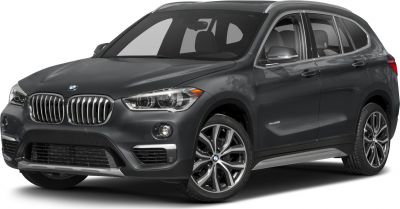
| Production: | 2015-2019 |
|---|---|
| Model Year: | 2015 |
| Length: | 4439 mm174.8 in |
| Width: | 1821 mm71.7 in |
| Height: | 1598 mm62.9 in |
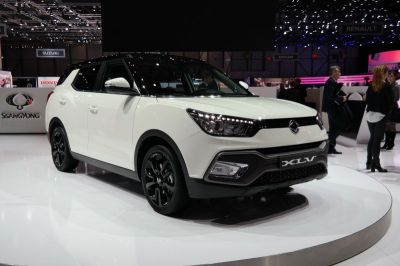
| Production: | 2016-2021 |
|---|---|
| Model Year: | 2016 |
| Length: | 4440 mm174.8 in |
| Width: | 1798 mm70.8 in |
| Height: | 1605 mm63.2 in |
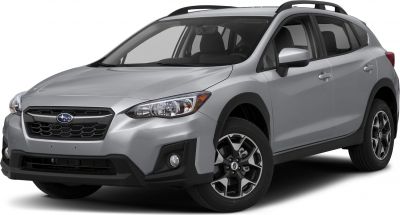
| Production: | 2017-2020 |
|---|---|
| Model Year: | 2018 |
| Length: | 4465 mm175.8 in |
| Width: | 2007-2022 mm79.0-79.6 in |
| Height: | 1595-1615 mm62.8-63.6 in |
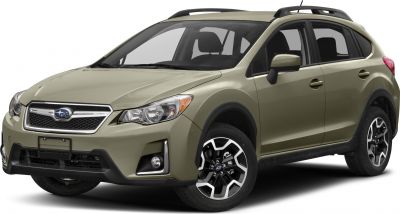
| Production: | 2015-2017 |
|---|---|
| Model Year: | 2016 |
| Length: | 4450 mm175.2 in |
| Width: | 2004 mm78.9 in |
| Height: | 1615 mm63.6 in |
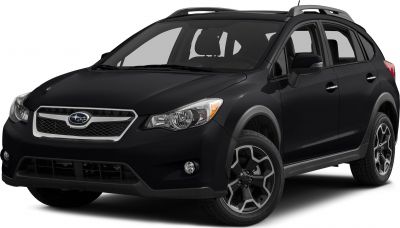
| Production: | 2013-2015 |
|---|---|
| Model Year: | 2013 |
| Length: | 4450 mm175.2 in |
| Width: | 1986 mm78.2 in |
| Height: | 1615 mm63.6 in |

| Production: | 2018-2021 |
|---|---|
| Model Year: | 2018 |
| Length: | 4450 mm175.2 in |
| Width: | 1820 mm71.7 in |
| Height: | 1600 mm63.0 in |
